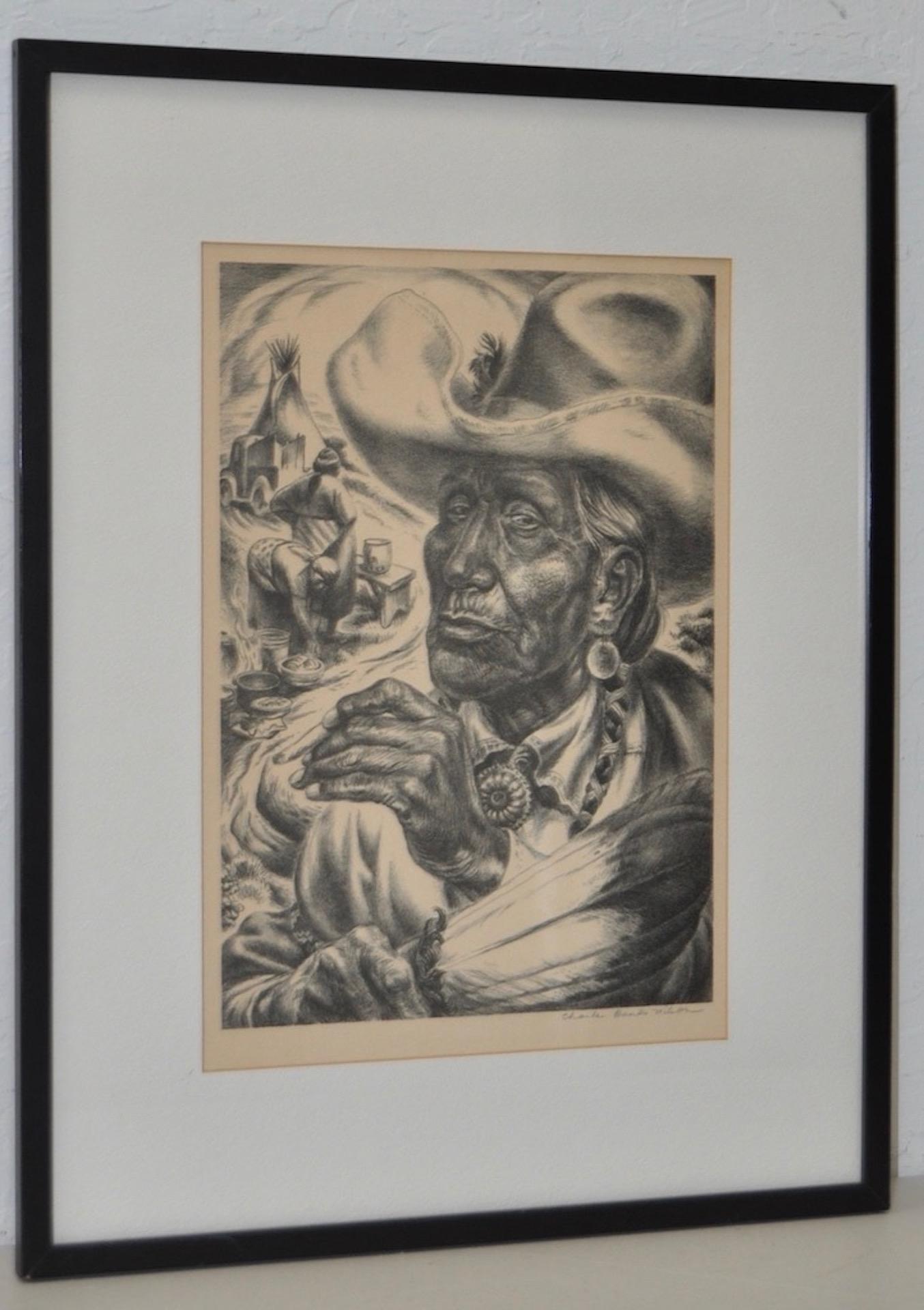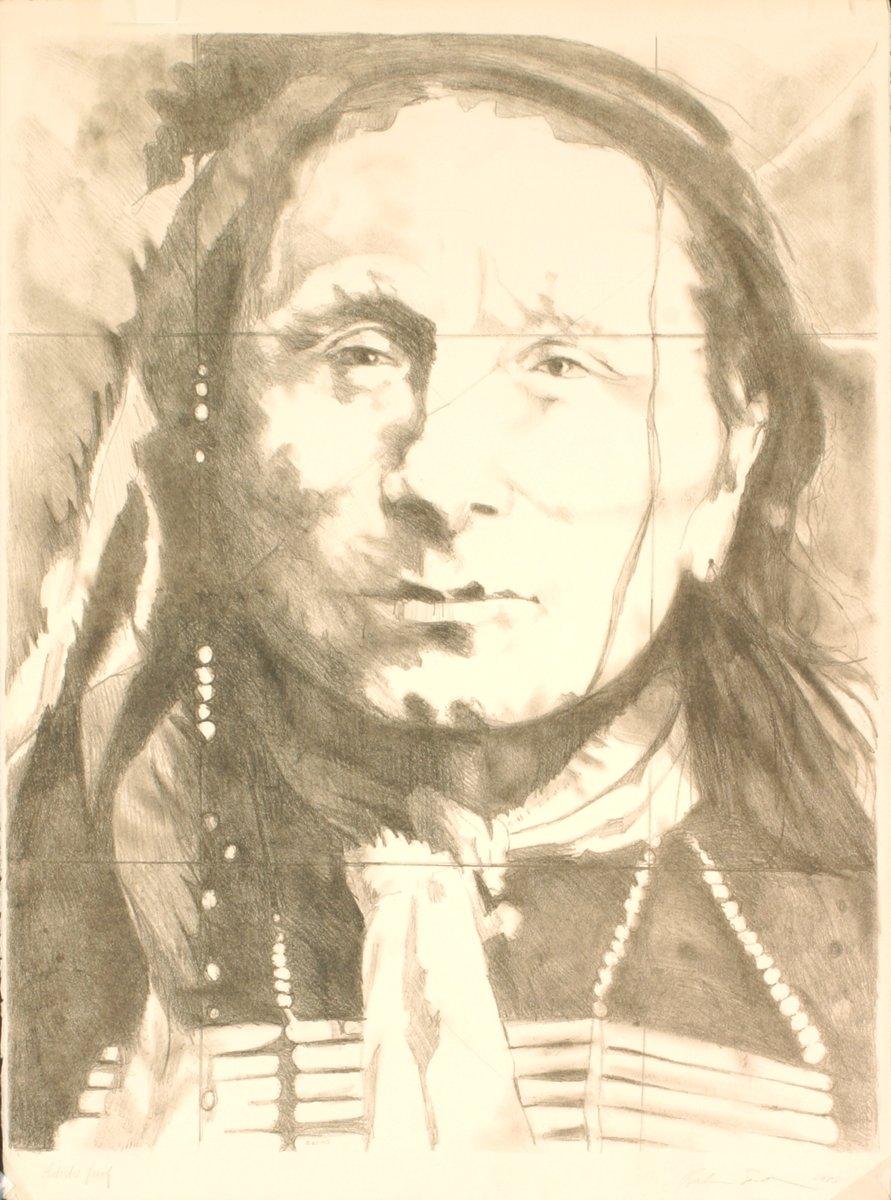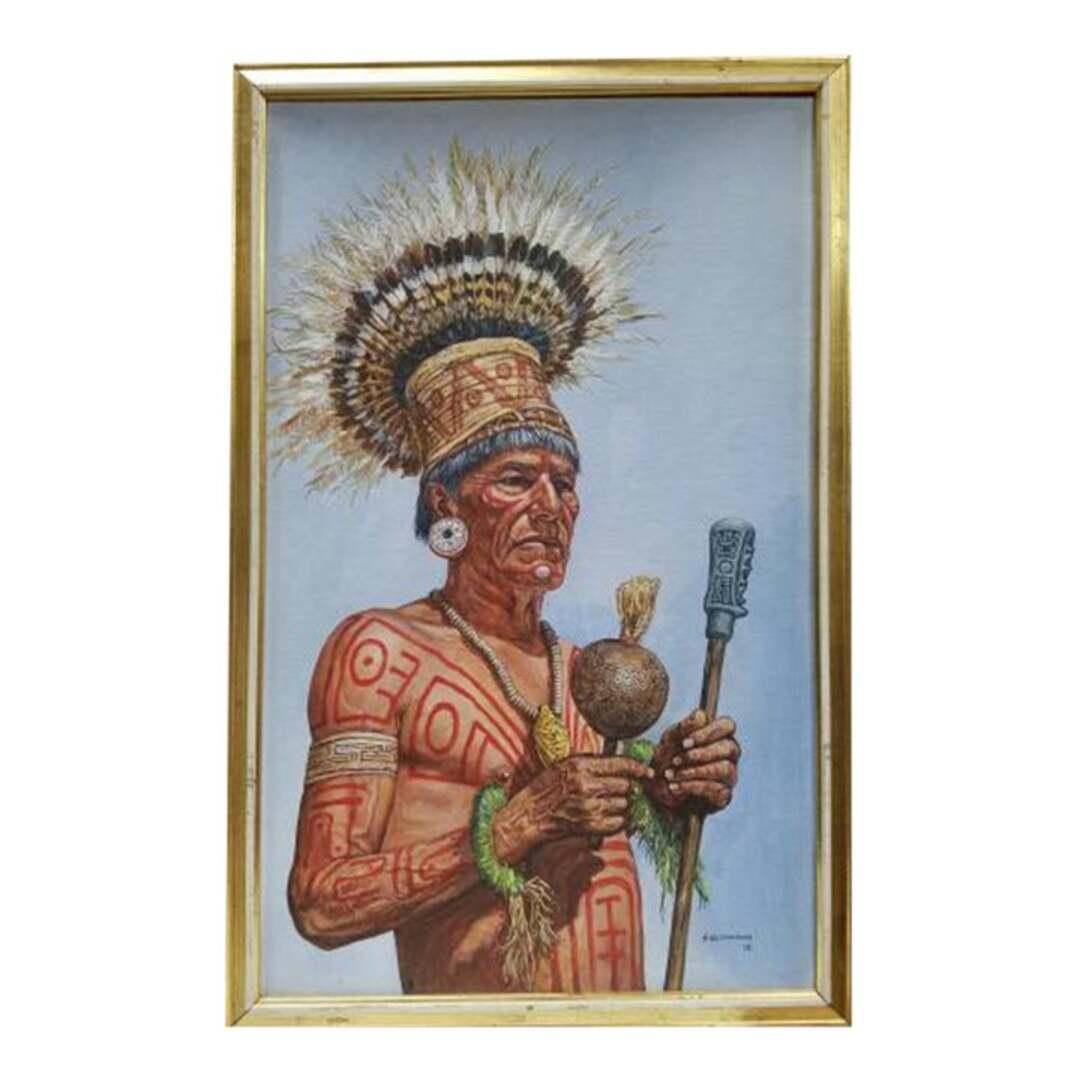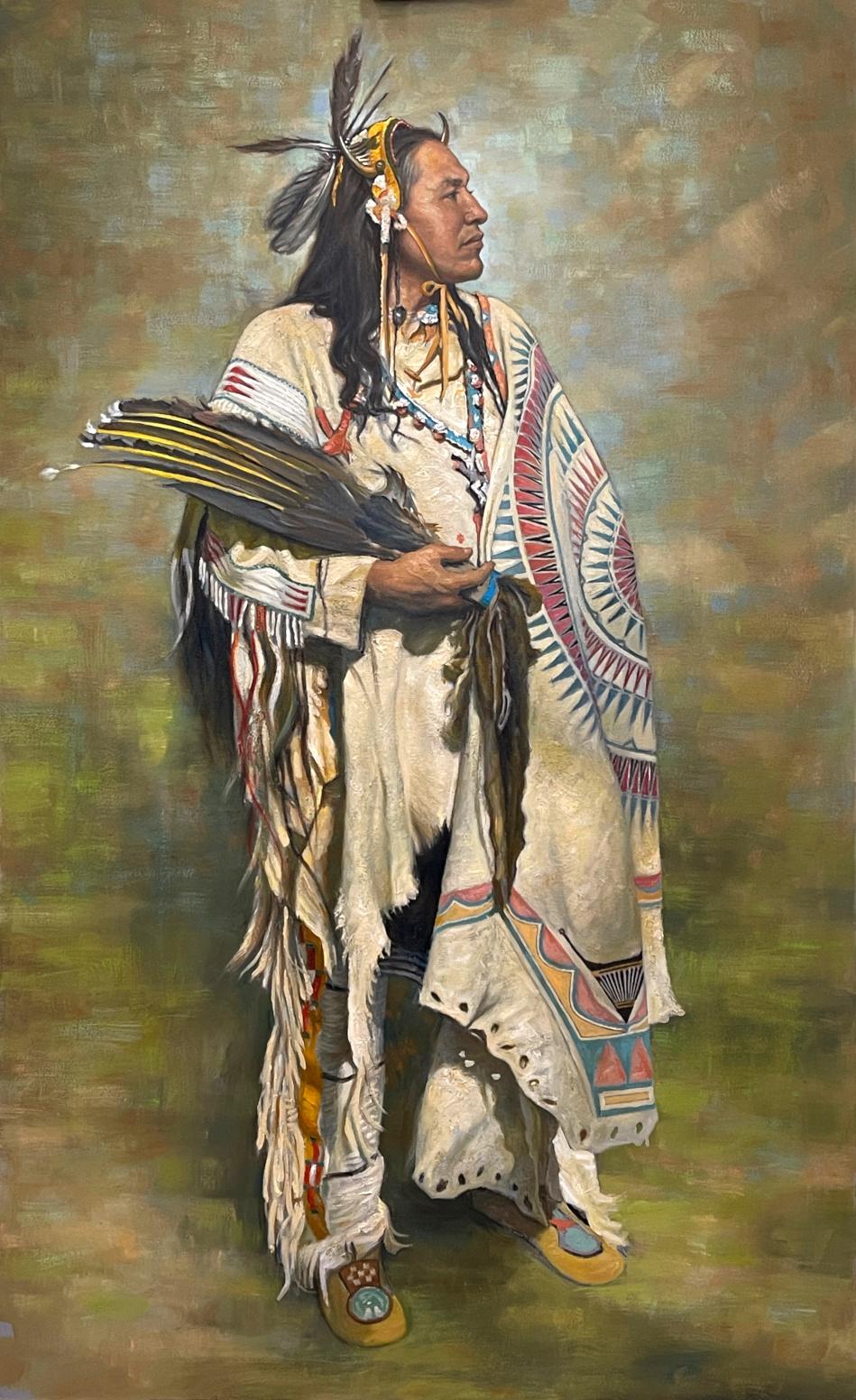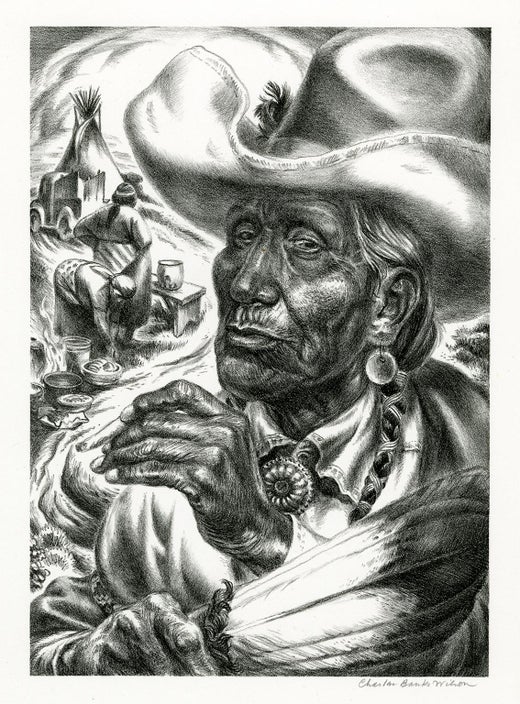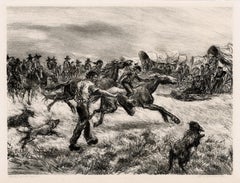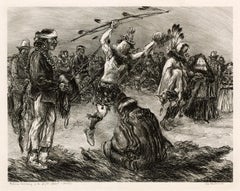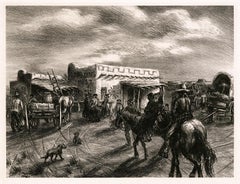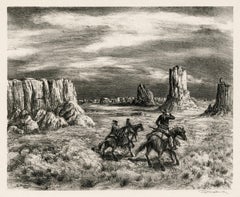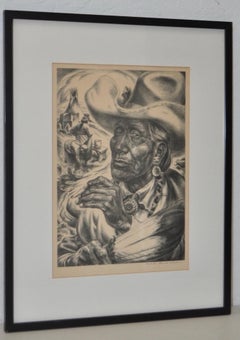Charles Banks WilsonOld Injun1948
1948
About the Item
- Creator:Charles Banks Wilson (1918 - 2013, American)
- Creation Year:1948
- Dimensions:Height: 12 in (30.48 cm)Width: 8.5 in (21.59 cm)
- Medium:
- Movement & Style:
- Period:
- Condition:
- Gallery Location:Myrtle Beach, SC
- Reference Number:Seller: 1035591stDibs: LU53234289721
Charles Banks Wilson
Charles Banks Wilson was born in Springdale, Arkansas in 1918, his family eventually moving to Miami, Oklahoma, where he spent his childhood. Wilson enrolled in the Art Institute of Chicago in 1937 to study painting, watercolor and lithography. He obtained an apprenticeship as an illustrator at the Chicago Tribune and contributed to a folio for the American Art Association. Many of Wilson’s works hang in the Oklahoma State Capitol including life-size portraits of Will Rogers, Sequoyah, Jim Thorpe and Senator Robert Kerr. Four other murals depicting the early history of Oklahoma also hang under the Capitol dome. In addition to being the author and editor of a standard work on the Indian Tribes of Eastern Oklahoma, he is also the illustrator of 22 books and has contributed illustrations to many more. A painter, printmaker, teacher, lecturer, historian, magazine and book illustrator, Wilson's work has been shown in over 200 exhibitions in the United States and across the globe. Permanent collections of Wilson's work are housed in some of the most renowned museums and art galleries in the world. These include New York's Metropolitan Museum, Washington's Library of Congress, the Corcoran Gallery and the Smithsonian. Works by Wilson are a prominent feature of the Oklahoma State Capitol. Wilson died in his sleep at the age of 94 on May 2, 2013.
- ShippingRetrieving quote...Shipping from: Myrtle Beach, SC
- Return Policy
More From This Seller
View All1940s American Modern Landscape Prints
Lithograph
1940s American Modern Landscape Prints
Lithograph
1940s American Modern Landscape Prints
Lithograph
1940s Landscape Prints
Lithograph
1940s American Modern Landscape Prints
Lithograph
1920s Realist Animal Prints
Etching
You May Also Like
Mid-20th Century Impressionist Portrait Prints
Lithograph
Late 19th Century Naturalistic Portrait Paintings
Oil
1970s Contemporary Prints and Multiples
Lithograph
1970s Portrait Paintings
Oil
2010s Realist Landscape Paintings
Oil
Late 20th Century Realist Figurative Prints
Lithograph
